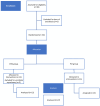The Pleth Variability Index as a Guide to Fluid Therapy in Dogs Undergoing General Anesthesia: A Preliminary Study
- PMID: 39330775
- PMCID: PMC11436136
- DOI: 10.3390/vetsci11090396
The Pleth Variability Index as a Guide to Fluid Therapy in Dogs Undergoing General Anesthesia: A Preliminary Study
Abstract
The aim of this prospective, randomized clinical trial was to evaluate the use of the pleth variability index (PVi) to guide the rate of intraoperative fluid therapy compared to a traditional fixed-fluid-rate approach in ASA 1-2 dogs undergoing surgery. Twenty-seven dogs met the inclusion criteria and were randomly assigned to the conventional fluid management group (CFM, n = 12) or the PVi-guided group (PVi, n = 15). The CFM group received a fixed rate of 5 mL kg-1 h-1 of crystalloid solution, while in the PVi group the rate was continuously adjusted based on the PVi: PVi < 14% = 3 mL kg-1 h-1; 14% ≤ PVi ≥ 20% = 10 mL kg-1 h-1; and PVi > 20% = 15 mL kg-1 h-1. Hypotension (MAP < 65 mmHg) in the CFM was treated with a maximum of two fluid boluses (5 mL kg-1 in 10 min) and in the case of no response, dobutamine (1-3 mcg kg-1 min-1) was administered. In the PVi group, the treatment of hypotension was similar, except when the PVi > 14%, when dobutamine was started directly. Total fluid volume was significantly lower in the PVI group (0.056 ± 0.027 mL kg-1 min-1) compared to the CFM group (0.132 ± 0.115 mL kg-1 min-1), and the incidence of hypotension was lower (p = 0.023) in the PVi group (0%) compared to the CFM group (41%). The mean arterial pressure (MAP) was significantly higher in the PVi group during surgery. Dobutamine was never administered in either group. Preliminary data suggest that the PVi may be considered as a potential target to guide fluid therapy in dogs; larger studies are needed, especially in cases of cardiovascular instability.
Keywords: anesthesia; conventional fluid management; dog; fluid therapy; intraoperative management; pleth variability index.
Conflict of interest statement
The authors declare no conflicts of interest.
Figures




Similar articles
-
Pleth Variability Index Guided Volume Optimisation in Major Gynaecologic Surgery.J Coll Physicians Surg Pak. 2022 Aug;32(8):980-986. doi: 10.29271/jcpsp.2022.08.980. J Coll Physicians Surg Pak. 2022. PMID: 35932119 Clinical Trial.
-
Efficacy of Goal-Directed Fluid Therapy via Pleth Variability Index During Laparoscopic Roux-en-Y Gastric Bypass Surgery in Morbidly Obese Patients.Obes Surg. 2018 Feb;28(2):358-363. doi: 10.1007/s11695-017-2840-1. Obes Surg. 2018. PMID: 28762023 Clinical Trial.
-
The concept of titration can be transposed to fluid management. but does is change the volumes? randomised trial on pleth variability index during fast-track colonic surgery.Curr Clin Pharmacol. 2013 May;8(2):110-4. doi: 10.2174/1574884711308020003. Curr Clin Pharmacol. 2013. PMID: 23061978 Clinical Trial.
-
Pleth variability index-directed fluid management in abdominal surgery under combined general and epidural anesthesia.J Clin Monit Comput. 2015 Feb;29(1):47-52. doi: 10.1007/s10877-014-9567-5. Epub 2014 Feb 21. J Clin Monit Comput. 2015. PMID: 24557584 Clinical Trial.
-
Pleth Variability Index-Based Goal-Directed Fluid Management in Patients Undergoing Elective Gynecologic Surgery.Sisli Etfal Hastan Tip Bul. 2022 Jun 28;56(2):220-226. doi: 10.14744/SEMB.2021.81073. eCollection 2022. Sisli Etfal Hastan Tip Bul. 2022. PMID: 35990294 Free PMC article.
Cited by
-
Electroencephalographic and Cardiovascular Assessments of Isoflurane-Anesthetized Dogs.Vet Sci. 2024 Oct 18;11(10):514. doi: 10.3390/vetsci11100514. Vet Sci. 2024. PMID: 39453106 Free PMC article.
-
Evaluation of different constant rate infusions of dexmedetomidine in cats undergoing elective surgery.J Feline Med Surg. 2025 May;27(5):1098612X251330169. doi: 10.1177/1098612X251330169. Epub 2025 May 30. J Feline Med Surg. 2025. PMID: 40448310 Free PMC article.
References
-
- Le Manach Y., Hofer C.K., Lehot J.-J., Vallet B., Goarin J.-P., Tavernier B., Cannesson M. Can Changes in Arterial Pressure Be Used to Detect Changes in Cardiac Output during Volume Expansion in the Perioperative Period? Anesthesiology. 2012;117:1165–1174. doi: 10.1097/ALN.0b013e318275561d. - DOI - PubMed
LinkOut - more resources
Full Text Sources
Miscellaneous

